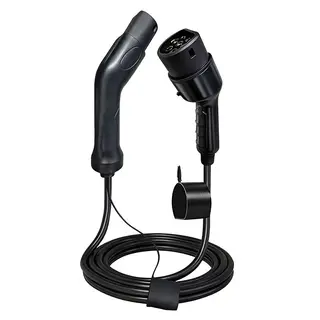With the rapid growth of new energy vehicles (NEVs), charging stations have become an indispensable part of the "new infrastructure," attracting the attention of many investors. However, while many recognize the enormous potential of the charging station industry, they often know little about its profit models. This article will explore the revenue streams of the charging station industry and highlight key considerations in operations, helping you better seize wealth opportunities in this emerging field.
With the rapid growth of new energy vehicles, the EV charging industry has become a key component of the "new infrastructure," attracting widespread investor attention. However, while many recognize its potential, few fully understand how charging stations generate revenue. How exactly do charging stations make money? Below is a detailed breakdown of the main profit models.
One future development direction for charging stations is the application of energy storage technology. For example, through solar power, a charging station can store electricity during off-peak periods when electricity prices are low and use it to charge vehicles during peak periods. This allows the station to operate at lower costs under the same market conditions, thereby increasing profit margins. This energy storage model not only reduces costs but also improves energy utilization efficiency, giving the station a competitive edge.
Imagine thousands of charging stations scattered across streets and neighborhoods, and they represent a vast advertising platform. Savvy advertisers naturally seize this opportunity. For charging station operators, strategically placing advertisements on the stations can generate significant revenue. However, ad placement must balance precision and user experience to avoid frustrating customers. For instance, screens on charging stations can display ads related to electric vehicles, eco-friendly products, or nearby businesses, aligning with user interests while creating commercial value.
Developing a proprietary QR-code charging platform or mini-program may be challenging but offers substantial returns. Through such a platform, a charging station can provide convenient charging services and integrate multiple value-added offerings, such as vehicle maintenance, repair appointments, and battery diagnostics. Additionally, the platform can analyze user data to provide personalized charging recommendations and promotions, enhancing both user experience and loyalty.
Setting up shops or self-service vending machines within the charging station area is another effective revenue stream. Operators need to invest in store setup, consider the purchasing needs of charging users, and allocate staff to support operations. Once established, retail services not only generate additional income but also elevate the overall service level of the station.
Beyond charging electric vehicles, operators can offer charging or power-related services for other devices. For example, they can rent electric scooters, bikes, or balance vehicles to EV owners, addressing short-distance travel needs near their destinations. This service benefits users while generating extra revenue for the charging station.
In many major cities, parking is a scarce resource. Charging stations with sufficient space can establish their own new energy vehicle garages. This not only maximizes the utilization of existing chargers but also alleviates parking shortages. In addition to increasing charging station usage, operators can earn extra income through parking fees.
Operating an EV charging station is not always smooth, and many operators encounter various challenges in practice. If not addressed properly, these issues can directly affect operational efficiency and profitability. Below are some common problems and their solutions.
Site selection is the foundation of charging station success. Poorly chosen locations can create significant operational difficulties. Some operators select sites without proper on-site inspection, ending up in remote areas with inadequate signage, difficult navigation, low vehicle and foot traffic, or even spaces occupied by conventional vehicles. Such problems can hinder operations from the very beginning.
Solution: Operators should conduct thorough data analysis before choosing a site. This includes surveying the number of charging stations within a five-kilometer radius, their platforms, power levels, usage, and surrounding amenities such as restrooms or restaurants. By combining on-site inspections with big data analysis, like traffic heat maps, operators can select high-traffic locations with well-developed infrastructure. Clear signage and navigation guidance should be provided, and measures should be taken to prevent parking by non-electric vehicles.
Some operators focus only on building the station and neglect equipment safety. For example, without rain shelters or waterproofing measures, chargers may become unusable during rain. Older or slow chargers can fail frequently, and limited charging spaces further reduce user satisfaction, leading to customer loss.
Solution: Operators should strictly control the quality of charging equipment, selecting reputable domestic or international brands to ensure reliability. Safety measures—such as rain shelters, lightning protection, and emergency preparedness—must be in place. Regular maintenance and upgrades are essential to ensure efficient and safe operation.
Many charging stations are built but not actively managed, neglecting after-sales service, customer experience, and user engagement. For example, stations without staff to address charging problems, operators lacking service awareness, or no engagement activities can struggle to maintain long-term growth.
Solution: Operators should focus on station management, providing seamless QR-code payment experiences, issuing coupons, holding prize draws, distributing gifts, and actively managing user communities to increase engagement. A complete after-sales support system should be in place to promptly resolve any issues. Adding nearby amenities such as restaurants, restrooms, or lounge areas can further enhance the user experience.
In the EV charging industry, successful operation depends on a comprehensive consideration of multiple factors to ensure that a charging station not only attracts users but also achieves long-term, stable profitability. The key factors for successful EV charging station operations are as follows.
Location is crucial for the success of a charging station. Before selecting a site, operators should conduct thorough data analysis, including the number of nearby charging stations, platforms, power levels, usage patterns, and surrounding facilities. By combining on-site surveys with big data insights, operators can choose locations with high vehicle and foot traffic and well-developed supporting infrastructure. For example, a parking lot near a large office building housing multiple internet companies, with employees commuting by car or using ride-hailing services, would be an ideal location for a charging station.
High-quality charging equipment is the foundation for long-term, stable operation. Operators should choose reputable domestic or international brands to ensure equipment reliability from the outset. Safety is also critical: install canopies, lightning protection, and maintain emergency preparedness. Regular maintenance and upgrades are essential to ensure efficient and reliable charging operations.
Running a charging station requires attention to detail and delivering a superior user experience. Operators should provide convenient QR-code payments, issue coupons, organize lucky draws, distribute small gifts, and actively manage user communities to strengthen engagement. A robust after-sales support system is also essential to promptly address any issues. Providing nearby amenities such as restaurants, restrooms, or lounge areas can further enhance the user experience.
To increase utilization, stations can offer convenience stores, small entertainment facilities, or Wi-Fi, making the charging process more convenient and enjoyable. These value-added services not only enhance user satisfaction but also attract more vehicle owners to the station.
The charging network is the foundation of all profit models. By using the charging network as a gateway, operators can integrate charging, sales, rental, and dealership value-added services, achieving a fusion of the charging network, connected vehicles, and the internet. This integration maximizes both value and revenue. For example, data collected from the charging network can provide market feedback to automakers and deliver personalized service recommendations to users, creating multiple streams of profit.
The charging station industry offers vast market potential and diverse profit models. From energy storage and cost advantages to advertising, QR code charging platforms, retail and value-added services, multi-device charging and rentals, NEV garages and parking services, and network integration, investors have multiple avenues to generate revenue.
However, operating a charging station involves challenges, including site selection, equipment safety, and operational management. By implementing data-driven site selection, choosing high-quality equipment, establishing a solid operational system, and enhancing user experience, charging stations can achieve long-term stable growth.
In summary, the charging station industry is a promising emerging field. Operators who fully understand its profit models and operational challenges, and implement effective strategies, can succeed and maximize commercial value.



